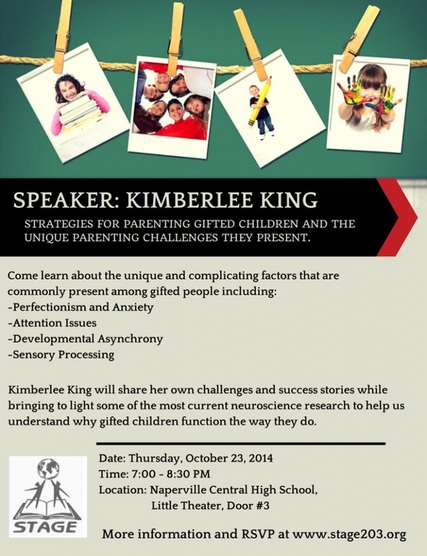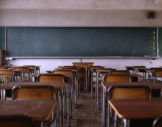
On October 23 at 7 p.m., STAGE, Naperville School District 203's counterpart to CANDO, is hosting Kimberlee King, who will speak about giftedness. Details about the event are available at STAGE's website here.
 On October 23 at 7 p.m., STAGE, Naperville School District 203's counterpart to CANDO, is hosting Kimberlee King, who will speak about giftedness. Details about the event are available at STAGE's website here.
0 Comments
 Upcoming events and deadlines:
Have you seen … ? • A recent article discusses the relationship of gifted education and implementation of the common core. • The new newsletter from NUMATS is available. The link is at this website on the left menu under "announcements." This fall's newsletter features an article entitled "Problem-Based Learning 101." • In a recent podcast on Spotlite Radio, Susan Winebrenner, author of Teaching Gifted Kids in Today's Classroom and The Cluster Grouping Handbook, talks about the challenges facing gifted education and some solutions to those issues. • The Brilliant Blog by writer Annie Murphy Paul discusses articles and current research on intelligence and learning.  One of BPS101's 2012-2013 Gifted Committee meetings will be focused on addressing the social and emotional needs of gifted and talented students. In light of this aim, some of our blog posts, including this one, will examine different ideas of what those social and emotional needs might be. Many gifted children seem to experience the world more intensely than other people. This intensity might manifest itself in various traits a child might exhibit, for example:
These and other intensities were categorized by the Polish psychologist Kazimierz Dabrowski (1902-1980) as five distinct “overexcitabilities,” familiar today to many educators, psychologists, and parents. In his understanding, gifted individuals may process information, sensory input, and emotions more deeply, “overexciting” the nervous system. He groups the five overexcitabilities as follows: intellectual, psychomotor, sensory, emotional, and imaginational. (Want to read more about examples of each type? See this page reproduced from the SENG ( Supporting Emotional Needs of the Gifted) newsletter.) These overexcitabilites often result in intense behaviors that can be hard for children and teachers to manage from a social as well as an emotional standpoint--in class, or at home. What should be done when a child cries because paper scraps were recycled instead of saved? Or when a child is inconsolable because eraser marks have “ruined” homework? Or when homework or a test does not get completed because a student is indignant that the question uses incorrect grammar or is phrased ambiguously? Ultimately, parents and teachers can help to channel the energies that spawn such intense reactions into directions that may be more beneficial to the child. Fortunately, overexcitabilities have many positive manifestations too. For instance, those who are emotionally intense often have a profound empathy and sympathy for other people and for animals. Those who are imaginationally intense are likely to produce powerful creative works. Those who are intellectually intense might be the ones to solve challenging problems that we face as a global community. We can help our children take their own great steps forward when they are ready if we can understand how to help them to manage the challenges the overexcitabilities can pose, as well as to see the rewards they can bring. To read more about how each of the five overexcitabilities might appear, and some challenges and potential solutions for understanding and dealing with each category in the classroom, see this link to Byrdseed, a blog run by Ian Byrd, a teacher of gifted students in California. Although his blog is written with an audience of fellow educators in mind, this entry in particular speaks to parents and teachers alike. And after all, parents teach their children too! At the end, he helpfully provides links to other references and discussions of Dabrowski's work. |
Archives
January 2016
Categories
All
|